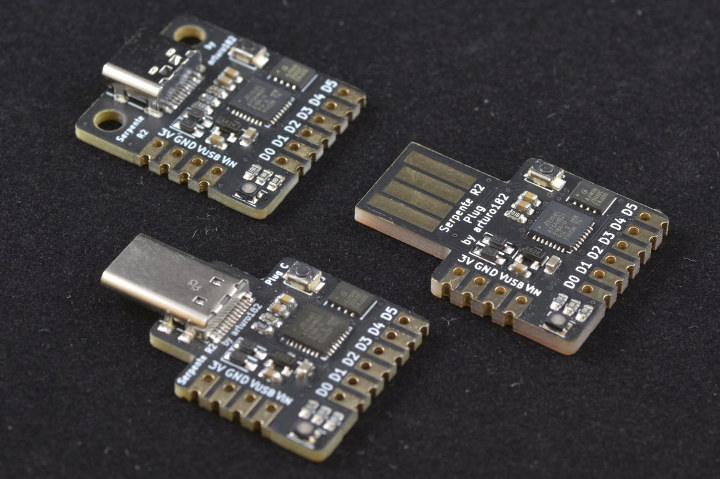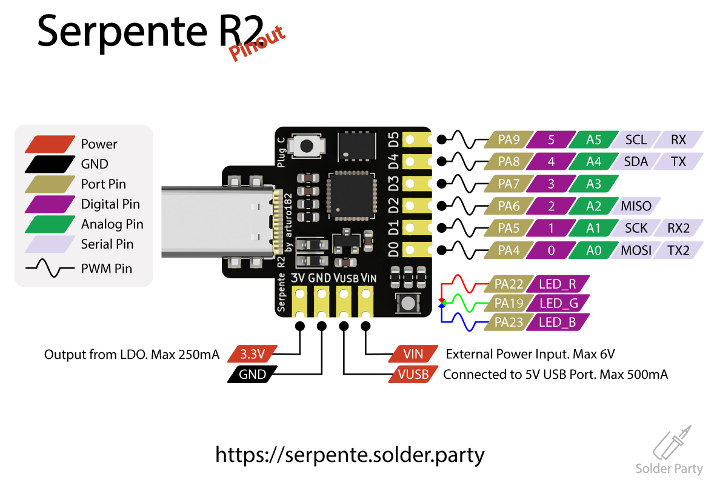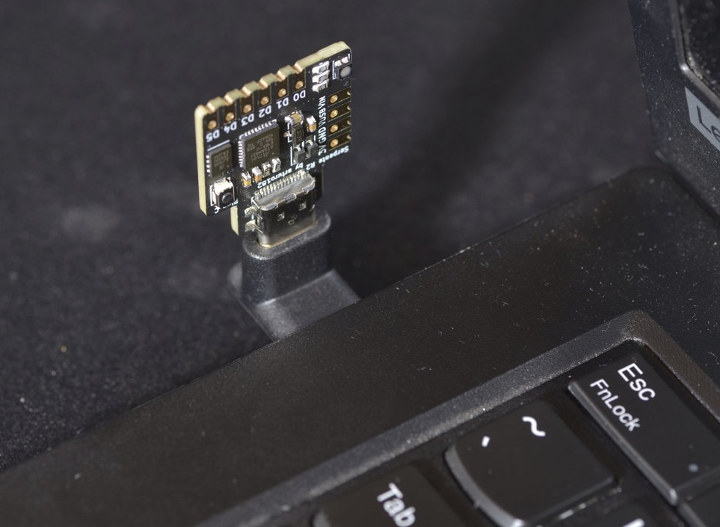Development boards with a USB Type-C port for power and programming are becoming more common, most in most cases with a female USB-C port.
Designed by arturo182, Serpente R2 CircuitPython prototyping board based on Microchip SAMD21 Arm Cortex-M0+ microcontroller offers three USB power & programming option with USB type-A male, USB type-C female, or USB type-C male, with the latter option allowing you to plug into directly into your host computer.

Serpente R2 board specifications:
- MCU – Microchip ATSAMD21E18A 32-bit Cortex-M0+ running at 48MHz, with 256KB flash, and 32KB RAM
- Storage – 4MB SPI Flash for storing files and CircuitPython code
- Expansion – 10x I/Os with castellated holes including 6x customizable GPIOs, and 4x power signals (3V, GND, VUSB, and VIN)
- USB
- R2 – Female USB Type-C port
- R2 Plug – Male USB Type-A port
- R2 Plug C – Male USB Type-C port
- Misc – User RGB LED, reset button
- Power Supply – 5V via USB port or VIN; 250mA LDO; 3.3V logic and power
- Dimensions
- R2 – 24.75 x 22mm
- R2 Plug – 29.55 x 22mm
- R2 Plug C – 25.35 x 22mm
 The board is open source hardware (See KiCAD files on Github) and is meant to run Adafruit CircuitPython, and you’ll find pretty-looking documentation here.
The board is open source hardware (See KiCAD files on Github) and is meant to run Adafruit CircuitPython, and you’ll find pretty-looking documentation here.
Serpente R2 board is sold on Tindie for $15, but you can get a 25% discount with “@arturo182” code.

Jean-Luc started CNX Software in 2010 as a part-time endeavor, before quitting his job as a software engineering manager, and starting to write daily news, and reviews full time later in 2011.
Support CNX Software! Donate via cryptocurrencies, become a Patron on Patreon, or purchase goods on Amazon or Aliexpress





